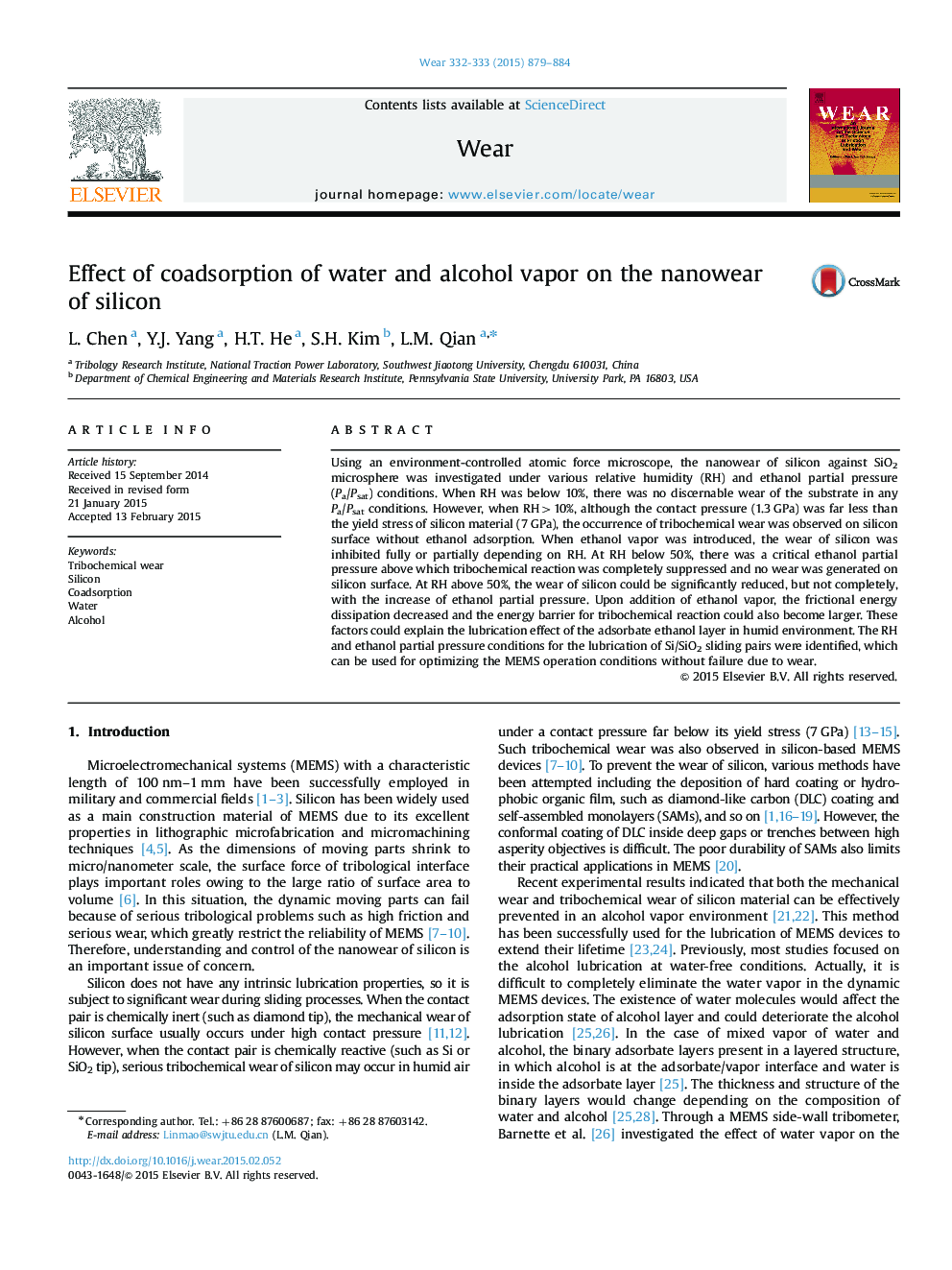| Article ID | Journal | Published Year | Pages | File Type |
|---|---|---|---|---|
| 617092 | Wear | 2015 | 6 Pages |
•The wear behavior of Si/SiO2 pair depends on coadsorption of water and alcohol vapor.•Coadsorption conditions for the lubrication of Si/SiO2 pairs were identified.•The alcohol layer reduced the tribochemical reaction probability of Si/SiO2 pairs.
Using an environment-controlled atomic force microscope, the nanowear of silicon against SiO2 microsphere was investigated under various relative humidity (RH) and ethanol partial pressure (Pa/Psat) conditions. When RH was below 10%, there was no discernable wear of the substrate in any Pa/Psat conditions. However, when RH>10%, although the contact pressure (1.3 GPa) was far less than the yield stress of silicon material (7 GPa), the occurrence of tribochemical wear was observed on silicon surface without ethanol adsorption. When ethanol vapor was introduced, the wear of silicon was inhibited fully or partially depending on RH. At RH below 50%, there was a critical ethanol partial pressure above which tribochemical reaction was completely suppressed and no wear was generated on silicon surface. At RH above 50%, the wear of silicon could be significantly reduced, but not completely, with the increase of ethanol partial pressure. Upon addition of ethanol vapor, the frictional energy dissipation decreased and the energy barrier for tribochemical reaction could also become larger. These factors could explain the lubrication effect of the adsorbate ethanol layer in humid environment. The RH and ethanol partial pressure conditions for the lubrication of Si/SiO2 sliding pairs were identified, which can be used for optimizing the MEMS operation conditions without failure due to wear.
